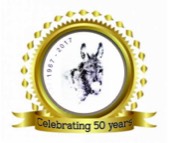Donkeys are a familiar sight today all over Great Britain. They originally arrived many centuries ago with the Roman legions, but they were uncommon in Britain until some centuries later. The Romans used them both as pack animals and in harness to draw supply wagons. In Victorian times there were as many as 100,000 donkeys working in London, and one very privileged donkey was driven in harness by Queen Victoria at her residence on the Isle of Wight. This article provides a fascinating insight into the development of donkeys and their domestication: download here.
Being a native of the marginal desert lands, donkeys’ needs for food are less than horses and ponies who are naturally native to lusher grasslands. Due to their physical characteristics, particularly at the shoulder, donkeys are slower and less powerful than horses, although they do have an initial turn of speed over a short distance.
They are used to living spread out from each other, hence their amazing voices which can carry up to two miles, and of course their delightful large ears allowing them to hear a distant neighbour.
Donkeys can vary in size, the most common in Britain being the Standard – roughly between 10 and 12 hands high (100cm – 120cm); the Miniature donkey must not exceed 36ins (90cm) when adult; and the larger French Poitou and American Mammoth donkeys can stand up to 17hh (170cm).
Donkeys come in a wide range of colours, from black to white through shades of grey and brown, and also broken colours such as brown and white, and roan. Most donkeys, but not all, display a cross on their backs, known as dorsal and shoulder stripes, and some also have zebra-like stripes on their legs.
Donkeys live rather longer than the average equine, the oldest recorded lived into its 60s, but they can regularly live into their late 30s and 40s.
Donkeys’ genders are referred to as stallions (entire males); geldings (castrated males); mares (females); and their offspring are known as foals. In the past they were referred to as Jacks and Jennies. They are also known as Asses. A mule is the offspring of a pony mare and a donkey stallion, and a hinny is the offspring of a pony stallion and donkey mare.
Donkeys are very intelligent. They are not stubborn as commonly believed, but need to assess what it is that they are being asked to do and to ensure it is safe for them before they will agree to it. Donkeys are sociable animals and need company, forming very strong bonds with their equine companions and their humans, which can be both extremely rewarding and challenging.



